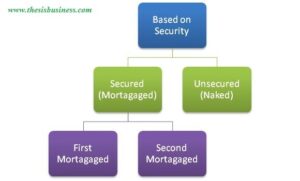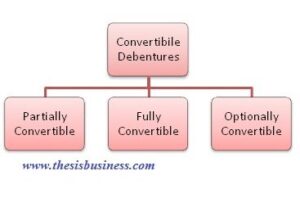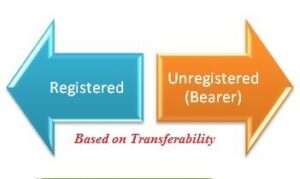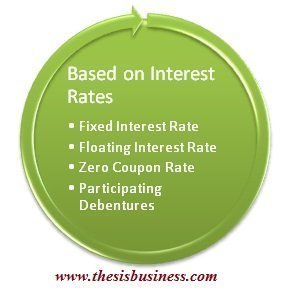Table of Contents
Types of Debentures:
Debentures are classified on the basis of its redemption date, conversion property, interest rate and its limitations. Thus debentures are very flexible in nature, now let me explore each type of debentures one by one based on their features and limitations.
Based on Security:
Secured (Motagaged) and Unsecured:
Secured Debenture can be further classified into the other two categories.
First Mortgage and Second Mortgage Debentures:
In case of Secured Debentures, there must be clarity on the claims over the company’s mortgaged assets at the time of realization if the company is unable to fulfil its obligations to the debenture holders at the promised date (Redemption Date).
In other words, if the company doesn’t or unable to repay the principal amount to the investors on the maturity date, the debenture holders would claim on its mortgaged assets to recover their funds. Hence the question arises, Who will be given preference at the time of recovery?
Thus to resolve this issue of preference, two types of secured debentures are issued – First Mortgaged and Second Mortgaged.
Fist mortgaged debenture holders are given priory at the time of realization whereas second mortgaged debenture holders are repaid later.
Subordinated Debentures:
These debentures are also known as subordinate loans or subordinated debt. As the name suggests these types of debentures are repaid after settling other debts of the company at the time of settlement of the company’s obligations. These debentures often offer a higher rate of interest comparatively other forms of debenture due to more risk.
Pros:
- Secured (Mortgaged) debentures are secured in nature, hence there is a comparatively lower risk of default.
- Unsecured (Naked) debentures, being unsecured in nature might offer higher interest rate comparatively.
- At the time of realisation, secured debentures (First and Second Mortgaged) are given priority for repayment to debenture holders.
- Secured debentures comparatively offer a lower rate of interest.
- Unsecured debentures are not backed up by the company’s assets, hence may have more risk of defaults at the time of realisation.
- At the time of liquidation, unsecured debenture holders may not be given priority as compared to others.
Based on Convertibility:
Convertible Debentures:
Therefore such debentures which are convertible into equity shares after a stipulated period of time called Convertible Debentures. The time and amount to be converted are mentioned in indenture at the time of issuance. Convertible debentures are further classified into three categories.
1) Partially Convertible:
In Partly Convertible Debentures only some proportion of the value of debentures is convertible. The proportion and date are already mentioned in indenture at the date of issuance.
2) Fully Convertible:
In case of Fully Convertible Debentures, its total value is convertible into equity shares at a future specified date.
3) Optionally Convertible:
Pros:
- Debenture holders are able to convert their investment into equity shares according to proportion, time and desire to maximize the return if they predict the share price of the company is going to raise in future.
Cons:
- If the share price of the issuing company didn’t increase, the investors may bear a loss instead of a fixed return.
Registered Debenture:
The debentures are issued with the name of debenture holders, that means debenture is issued for any particular person. This is known as Registered Debentures.
Bearer Debenture:
Contrary, if a debenture doesn’t carry the name of any individual is called Unregistered (Bearer) Debentures. Such debentures are transferable to any other investor.
Pros:
- Since Registered debentures are issued with the name of a particular person, hence it is safe in case of losing debenture certificate as it is unbearable.
- Whereas, Bearer debentures are transferable and can be sold to other investors easily.
Cons:
- In case of cash crunch debenture holders, can’t sell registered debenture easily and if done so, the buyer has to replace his name on the certificate.
- On the other hand, Bearer debentures are unsafe in case of losing certificate.
Based on Interest Rates:
Fixed Interest Rate Debentures:
Floating Interest Rate Debentures:
Zero-Coupon Debentures:
Although Zero-Coupon Debentures don’t pay any interest to the debenture holders, yet it doesn’t mean that the investors will not earn any profit on their investments. In fact, these are issued on a discount over their actual amount. The debenture holders would get the full amount on the maturity date.
Participating Debentures:
Participating Debentures generally offer the interest rate like venture capitalists and seed fundings. For example, initially, no interest will be paid for a stipulated time period, however, then some interest will be paid and finally if the establishes a higher rate of interest will be paid.
Pros:
- These debentures are flexible when it comes to interest rates, hence an investor can choose his best investment plan based on return and risk of interest rate fluctuations.
- On the other hand, an investor might suffer a loss or less return comparatively if he didn’t choose the right option cautiously.
Based on Mode of Redemption:
Since debenture is the medium and long term source of capital finance and issued for a long tenure, hence there is always a risk of interest rate fluctuations from the perspective of both debenture holders and company.
Therefore, to hedge the risk of interest rate ups and downs two different types of debentures are
issued for the sake of the investor as well as corporate’s benefit.
Callable and Putable Debentures:
Suppose an investor purchases a debenture of a company XYZ at the interest rate of 8% for 10-Years maturity period and now after 3 years if the market interest rate increases up to 9%. Then debenture holder will bear a loss of 1% for the remaining 7 years as he can purchase a similar type of debenture of any other companies offering an interest rate of 9% as per the current rate of interest.
Therefore, Callable Debentures are issued for long term tenure which provides the right to debenture holders to redeem in between tenure. Thus debenture holder may hedge the risk associated with an interest rate fluctuation.
On the other hand, Suppose if the interest rates decrease to 7% after 3 years, then the company will bear a loss of 1% for the remaining 7 years as the company may raise the funds by issuing new debentures offering a lower interest rate of 7% according to the revised rate of interest.
In this case, Puttable Debentures are issued in which the company holds the right to repay the entire amount to debenture holders at any time before the maturity period.
Redeemable and Irredeemable:
Pros:
- The investor can hedge the risk of loss due to interest rate ups and downs in future.
- If the prediction of the debenture holder is gone wrong, he may end up with a loss or less return.





